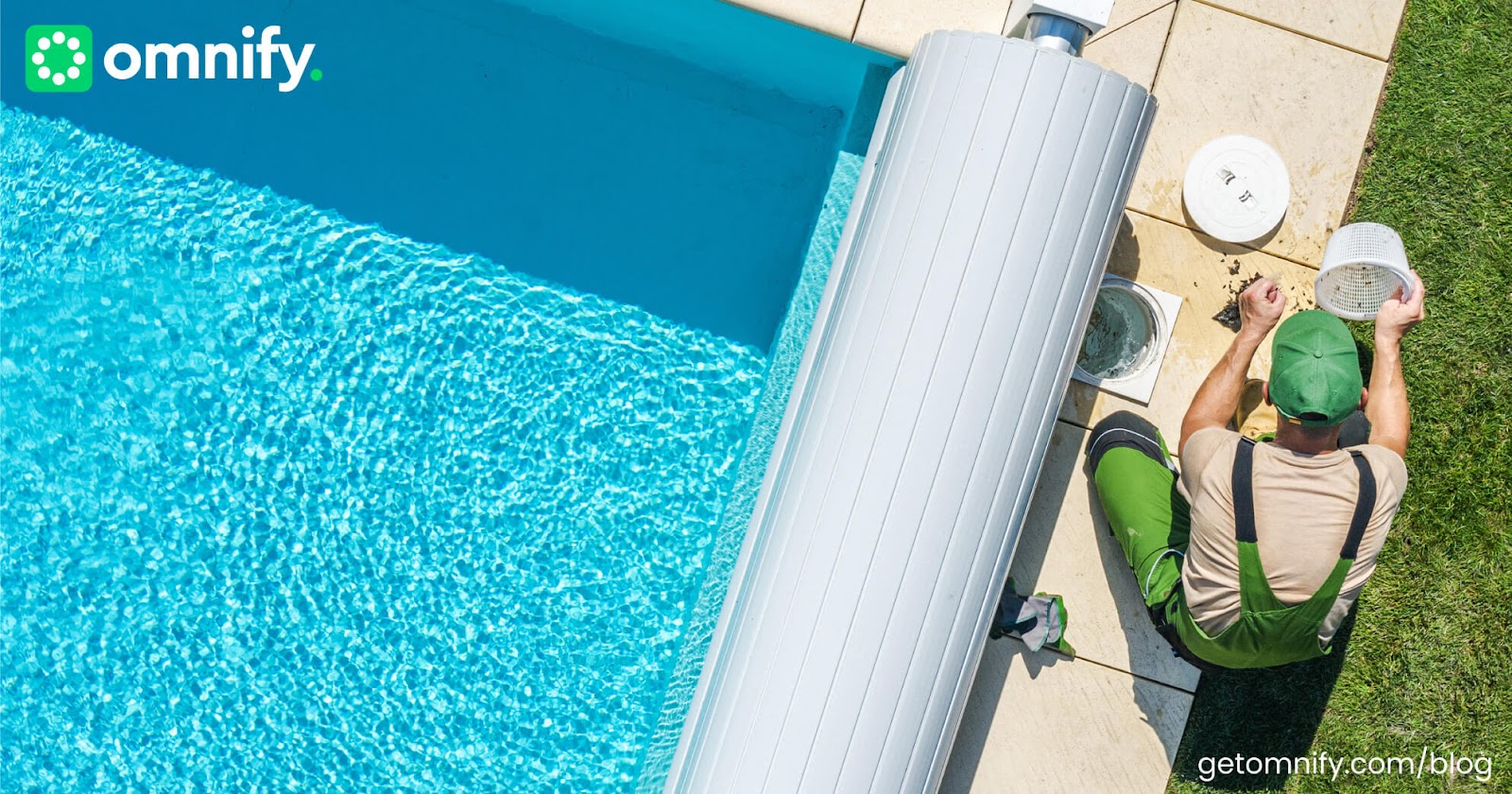
6 Tips to Manage a Community Pool Better

We all know how popular an amenity like a swimming pool is for a community. In fact, according to the CDC, swimming is the fourth most popular recreational activity in the United States. Lucky for many, most communities and HOAs in America do offer at least one swimming pool.
Needless to say, a community pool adds great value to a homeowner’s association (HOA) and largely attracts potential buyers. And why not? There is nothing like bringing the residents of a community closer together on a hot summer afternoon. HOAs, in fact, try to offer a varied group of amenities depending on the wide demographics of the community they cater to; ranging from clubhouses, gyms, and outdoor green spaces - patios, parks, playgrounds, walking trails, and so on. Yet a community pool is one that attracts home-buyers like no other.
Similarly, not everyone can afford their own private pool and the huge maintenance charges that come with it. So having a community pool actually diminishes the hassles of owning and maintaining one.
Besides, a community pool is central in contributing to the resale value of homes. Undoubtedly, any sort of housing property - be it single-family homes, condos, townhouses, and so on; if these have an important amenity like a community pool, it surely attracts the attention of buyers to triggering levels!
Therefore, a community asset as valuable as the neighborhood pool certainly makes pool management a key role in managing a community. For the community pool to be a safe and enjoyable space for everyone; maintenance, compliance matters, fair usage regulations, swim slot schedules, and safety and liability concerns must be taken into account.
Making the most of summer pool-time and general amenity experience helps make an HOA’s return on investment better. It also depends a lot on how a facility is managed - addressing and identifying the varied sets of risks and potential challenges in keeping all the visitors and members safe. Here are some of the common issues faced while managing a public or community pool and ways to manage them effectively.
Making the most of summer pool-time and general amenity experience depends a lot on how a facility addresses and identifies the varied sets of risks and potential challenges in keeping all members safe.
How to manage a community pool effectively?
- Repair and Maintenance
- Keeping Communities Safe with ADA-Compliant Status
- Safety Guidelines for Pool Patrons
- Effective Team Management
- Manage Swim Programs and Recreational Slots
- Streamline all Communications Proactively
Let’s now deep dive into each of these tips and get a better understanding.
1. Repair and Maintenance
Managing a community pool is not easy. Repair, cleaning, and maintenance are the core areas to take care of in order to provide the best possible comfort and relaxation for your pool patrons. Maintaining a pool requires the special intervention of cleaning and repairing personnel with huge maintenance costs as well. To optimize pool operations and minimize maintenance costs, it is advisable to go through regular checks of the pool surfaces and pool areas. The quicker the repairs are done, the lesser the cost of maintenance. According to a recent study, if pool repairs are not addressed in time, general maintenance costs that usually come up to a minimal $1000 annually may exceed 5 times for extensive repairs.

Apart from that, make sure your swimming pool drains and drain covers are in good condition, are Virginia Graeme Baker (VGB)-approved, and fit properly to avoid any sort of damage, injury, or mishap. It is always wise to keep a checklist on all the pool equipment, lockers, pumps, and furniture and ensure that they are well maintained and working properly.
As far as swimming pool water is concerned, regular cleaning of community pools is urgent. Based on the pool usage, the pool filter media should be regularly cleaned which would fail to filter pool water leading to dirt and debris accumulation. Secondly, it is recommended that a community pool should undergo one complete cycle of filters every six to eight hours depending on the rush and usage to keep the pool water clean and fresh.
This means that pool cleaning, repair and maintenance is an ongoing process that may also at times hamper normal operations. Therefore, it is best to adopt practices that help continue facility maintenance and repairs without hindering operations.
2. Keeping Communities Safe With ADA-compliant Status

Swimming is one of the most inviting and inclusive activities to offer to a community. In this context, according to the latest ADA Act (Americans with Disabilities Act), pool facilities built after 2012 should follow guidelines to keep your swimming pools safe for physically disabled neighbors and members. Newly constructed and altered facilities should be fully accessible to people with disabilities and conform to the ADA Standards of Accessible Design. Additionally, pool facilities should remove accessibility barriers from their existing infrastructures. This also allows people with disabilities to easily enter and exit the pools. As mentioned in the 2010 ADA Standards, a few infrastructural elements to be added are pool lifts, lifting capacity, size of the seat, and clear floor space.
Facilities should stay updated with some contemporary pool designs to improve accessibility, offer greater inclusion, and upgrade operations and member experience.
3. Safety Guidelines for Pool Patrons
Maintaining a safe pool facility is always a priority. And safety comes in many dimensions. Here are a few ways that you can make your swim facility safer and more welcoming.
- Health and Hygiene Concerns:
One of the most common issues faced by most swim schools and facilities is the issue of health and hygiene. Mostly with poor maintenance, pool patrons have greater chances of facing recreational water illnesses (RWIs). Prevention of RWIs is not just complex problem to be solved by ensuring heavy use of disinfectants but requires a unique balance between cleaning and water chemistry.

Apart from that, it is important to educate pool staff about safe and hygiene swimming so they can successfully assume the responsibilities of assuring good health of pool patrons and facility members. It is also the duty of pool patrons to not visit during any illness that could spread via water contamination such as diarrhea, etc.
To prevent other forms of viral infections, your facility has to stay on top of sanitization. Sanitizing every possible high-contact surface such as door handles, water dispensers, sinks, faucets, flush levers, lockers, cards, and so on within swim sessions will help maintain hygiene within the pool premises.
- Possible Risk Management
To ensure that risks associated with pool management are minimized, it is urgent for pool staff and the management team to adopt effective risk management strategies to prevent any sort of accident and mishap within the facility premises. Fatal unintentional drownings and non-fatal drownings are the most common forms of risks associated with swimming. CDC has identified drowning as the fifth leading cause of unintentional injury death in the US.

(A pool area should be managed with regular pool maintenance to avoid any damage to the life of a resident)
It is vital that swimming pool facilities are managed in accordance with the OHS Risk Management Policy to avoid slips, falls, and trips. Pool furniture should include non-slip mats in high-risk areas, using contrast color at the edge of the pool, non-slip surface protection, fences and gates in proper condition, etc.
For addressing sudden medical emergencies such as seizure disorders, heart conditions, and the like, pool operators should have intensive training in rescue and first aid. Hiring competent lifeguards and pool attendants that are skilled in responding to emergency situations can help alleviate the safety of your pool facility. Additionally putting up signs about pool usage rules, and safety rules in and around the facility help protect your facility from unwanted damage and liabilities. In case the facility uses a pool booking software, they can ensure all pool users accept your facility’s online liability waiver and terms of services before booking a slot, keeping your facility and staff safe from any damage and liabilities.
4. Effective Team Management

Just like every other organization that runs well because of the people behind the scenes; a swimming facility is no different. For a swimming facility, the staff may vary a bit more including pool attendants, lifeguards, coaches, front desk, accounts management, and so on. Hence it is significant to empower the facility staff in a way that their individual contribution seamlessly aligns with the larger goals of the organization. In order to function in a cooperative manner, effective management of schedules and time slots is a must. Especially for swim coaches, the way they have continuous communication with their clients and pool visitors without clashes in class schedules matters a lot.
A swimming pool booking and management system helps in managing schedules and availability better, avoiding chances of double-bookings, streamlines communications faster, and improves member experience.
5. Manage Swim Programs and Recreational Slots

A swimming pool facility is an inviting space for different activities and people. Over the years these amenities have become very popular and offered diverse spaces with a blend of features for everyone’s access. It is without a doubt that pool-time kindles the summertime vibrance all the more making it a happening place for kids, adolescents, and adults. Be it swimming lessons, low-impact aqua-fit lessons, group exercises, pool pilates, private sessions, pool parties, and so on, pool facilities are today trying to become as multi-functional as possible.
Therefore, in order to manage diverse swim programs and multiple recreational slots, a swimming facility must be backed by the right tools and resources to deliver the best facility experience and any preferable slot that a client or member desires without the hassles of manual bookings and back and forth communication.
Apart from that, without the help of the latest technology, managing client information, and member data is impossible. Using dated techniques for retrieving client information will only take a toll on a facility’s internal operations and member experience. Even with minimum staff and distraction, a pool scheduling and management system enables effortless scheduling and contactless check-ins for any preferred swim class, private session, or event!
6. Streamline all Communications Proactively

A key aspect that defines one facility from another today is the quality of communication between you and your clients and members. Effective and prompt communication with a personal touch reveals a lot about the facility and its concern for its patronage. It is an ultimate requirement of the facility management to show how they value the time, money, and efforts of their members day in and day out.
In order to maintain a high level of reputation and connect, proactive communications and touch-points are fundamental. Automated emails are an answer to this. Automating personalized emails helps pool facilities, HOAs, COAs, swim schools, etc to continuously cater to their client's needs in real-time- right from the point they made a booking until the end of their session. Constant reminders about slot bookings, booking emails with facility guidelines, slot openings in case of a waitlist, payment reminders and so much more.
Conclusion
As the pool season gets closer, your facility would already be prepping up to host buzzing numbers. What better way to kickstart planning for the best season for the outdoors and not to forget, summer’s most vibrant event- the Fourth of July! Make the best use of your facility and provide the finest amenity and pool experience for your guests. Stay in touch with the times and allow your members to ride the summer tide in the safest, cleanest, and most convenient way possible!
As your swim facility adopts these best practices, your team might find itself stretched thin at times. If you would like to make sure your team or club is backed by the right tools to optimize their operations and deliver the highest standards of service, Omnify offers swim schools an all-in-one class scheduling and management solution through an intuitive and easy-to-use platform. To find out how Omnify would work for your operational needs, sign up for a FREE TRIAL and get started today!
Learn about some of the common issues and challenges faced while managing a community pool in keeping all members safe and how to effective ways to solve them.








